The company
A company that commercializes and distributes consumer goods to retailers. Its suppliers are industrial companies that manufacture these goods, which are then commercialized and distributed to several retailers.
The challenge
In a market characterized by strong price competition and low profit margins, how do you execute an innovative differentiation strategy?
In this sector, the aggressive strategies of competitors often consist of sacrificing service quality for the sake of very low prices. This price competitiveness translates into reduced sales margins, which limits the innovation efforts of those who wish to establish themselves as market leaders.
In recent years, as a result of acquisitions and organic growth, this company has expanded and grown, using a strategy always focused on customer satisfaction. Year on year, its results have been on an upward curve, but with a small profit margin. In this context, the company intends to expand its strategy of customer-oriented growth and innovation ensuring satisfactory profitability for its shareholders.
The solution
The definition of a multidisciplinary team for the design of the company’s innovation strategy for the next three years enabled the identification of the core areas and initiatives that will enable the achievement of the intended market leadership position. Resulting from this exercise, the disruptive initiatives to be implemented in a three-year horizon were defined. In addition, potential lines of action to be implemented depending on the availability of shareholder investment were identified, as well as those to be included in the second three-year cycle of the company’s growth and innovation strategy.
These initiatives were developed based on insights from current and potential customers to identify market needs.
In such a traditional market, the main challenge is to discover new opportunities that lead to a differentiating and disruptive strategy. Therefore, four growth areas were identified.
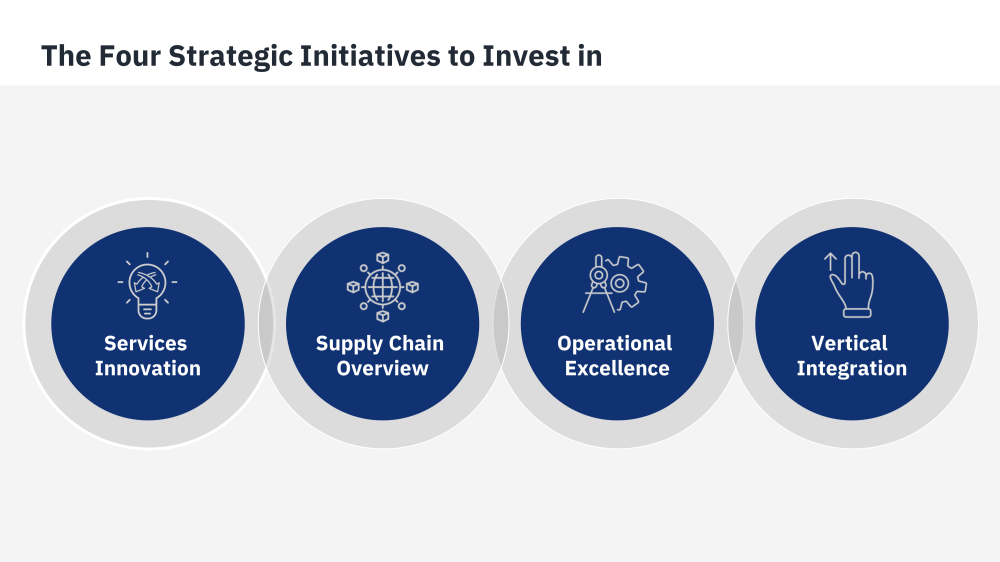
Services Innovation
The first strategic initiative is based on discovering the customer’s current needs, as well as their unknown future needs, allowing the company to adjust its strategy in the medium term. Through exploratory work with the customer, VOC – Voice of Customer, aimed at gathering insights regarding the strategy to be defined, the team followed a quantitative and qualitative approach, which led to the collection of valuable information.
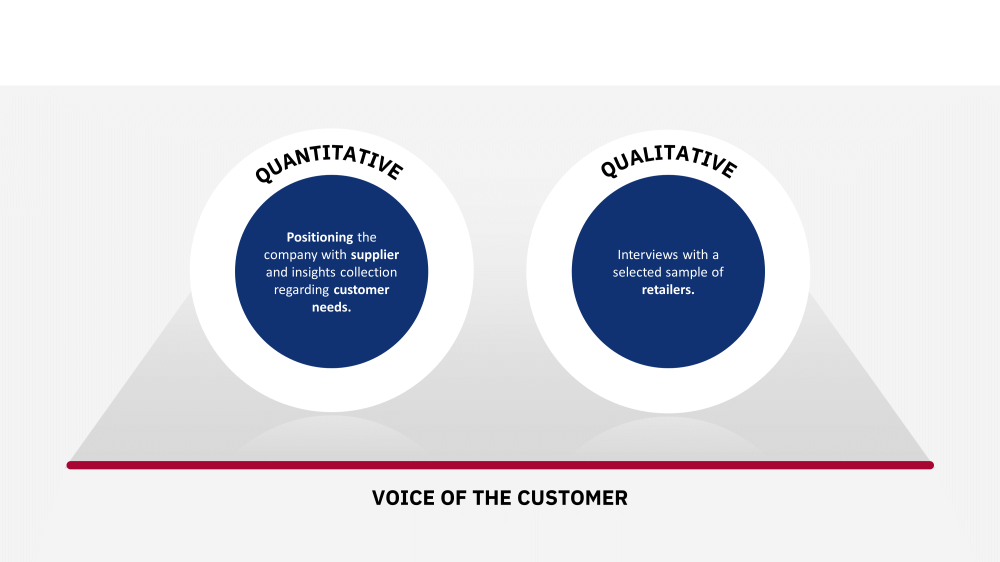
After the VOC study, it was possible to verify that price is the most important factor for the customer, and that the company is not especially competitive in this aspect (despite being one of the main market players). It was also established that the utility factors to be improved are product availability, the returns management process, the innovative service offering and the ordering process.
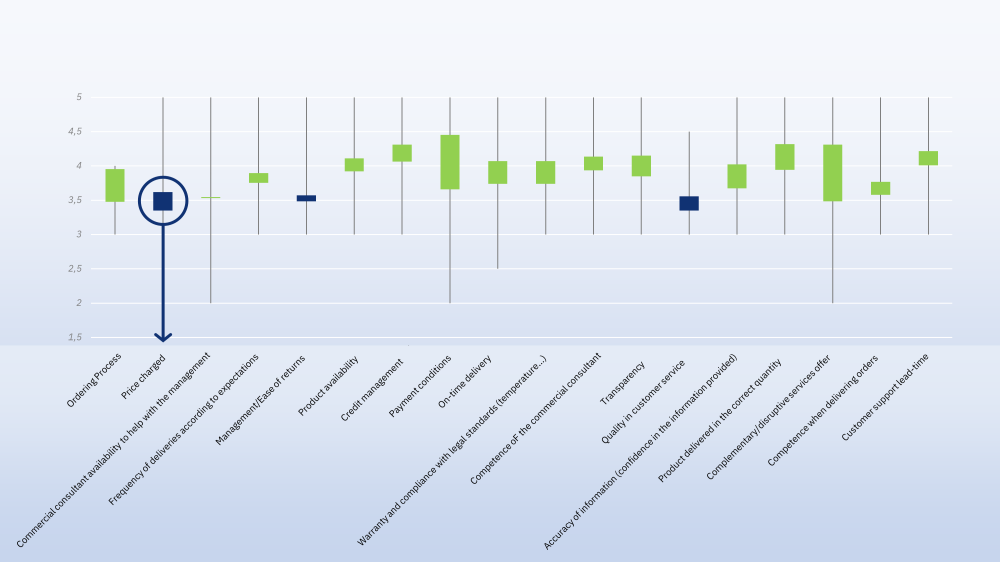
Another initiative that arose from the VOC was the decision to focus on differentiation through the creation of a VMI – Vendor-Managed Inventory tool – a stock management service offered to retailers which boosts customer retention.
Furthermore, other potential customer groups, besides the usual retailers were explored. Traditionally, this company sells its products to private retailers. In this case, the possibility of commercializing these products to public entities that regularly consume them and use a purchase method that is very different from that used by traditional retailers was studied.
Supply chain overview
End-to-end mapping of the production process, sales to wholesalers, distribution and returns processing with the purpose of identifying initiatives to expand activity and take advantage of synergies between the industry and the wholesaler. From this analysis, it was concluded that the possibility existed for this wholesaler to expand the current relationship with its supplier (the producing industry), betting on becoming a commercial agent of the producing industry to increase sales to the end customer of its products, thus providing a service to its supplier.
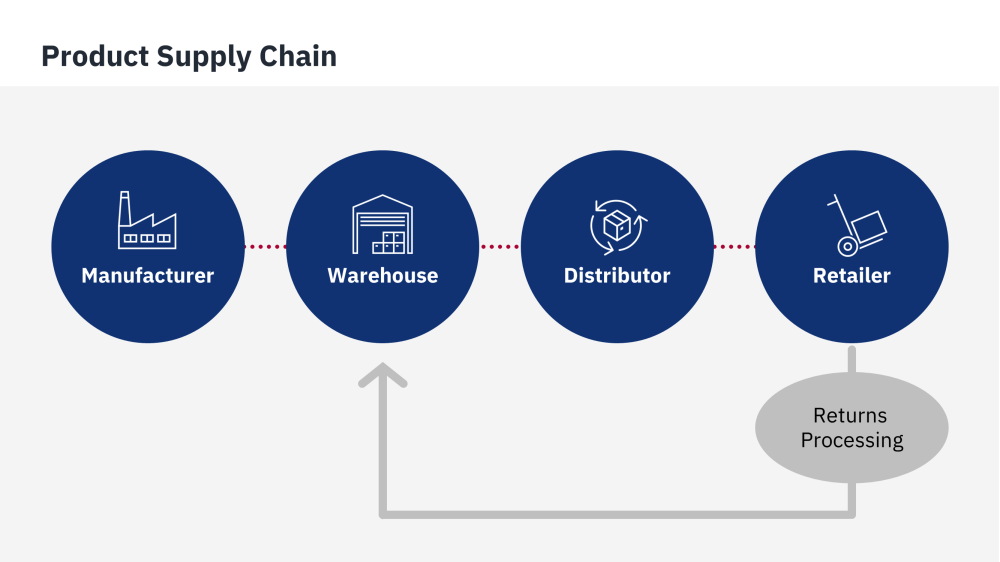
Vertical integration
The team identified the need to create a structure that offers a differentiating service model to the retail groups it supplies, complementary to the sale of the product. Thus, the company will be able to expand its business model based on real data provided by its customers. This action allows the company to enjoy a structure with synergies and complementary services that offer value to the customer.
The VOC analysis indicates the need to turn retailers into small customer support centers providing basic services. Therefore, the need to strategically focus on downstream vertical integration of operations by developing a group of retailers with differentiated services became evident. Besides being a source of additional revenue, it is also a way to avoid new players.
Analyzing potential business adjacencies, from the beginning to the end of the value chain, the company could be tempted to start, for example, the production of the goods it currently distributes. However, this new sector is too far from the core business of the company, which only acts as a distributor to retailers.
Operational excellence
Allied to the quality of customer service, operational excellence reveals itself to be one of the key areas in the definition of the company’s strategy. In fact, after mapping the processes it was proven that, in the past, the focus was on operational improvements in departmental efficiency, and not in the global efficiency of the supply chain. It is therefore necessary to develop initiatives to reduce the global costs of the value chain.
The three-innovation horizon model proposes the definition of innovation initiatives to be implemented at specific time intervals, thus allowing the management of the growth and innovation strategy.
The first horizon concerns incremental improvements which, for this company, are related to the optimization of its operations. The second horizon, a three-year horizon, foresees the expansion of the company’s activity with the creation of new products and services and is related to the pillar of Innovation in Services.
Finally, the definition of the long-term strategy foresees the creation of markets that do not yet exist and, in this case, relates to the Supply Chain Overview initiative and Vertical Integration.
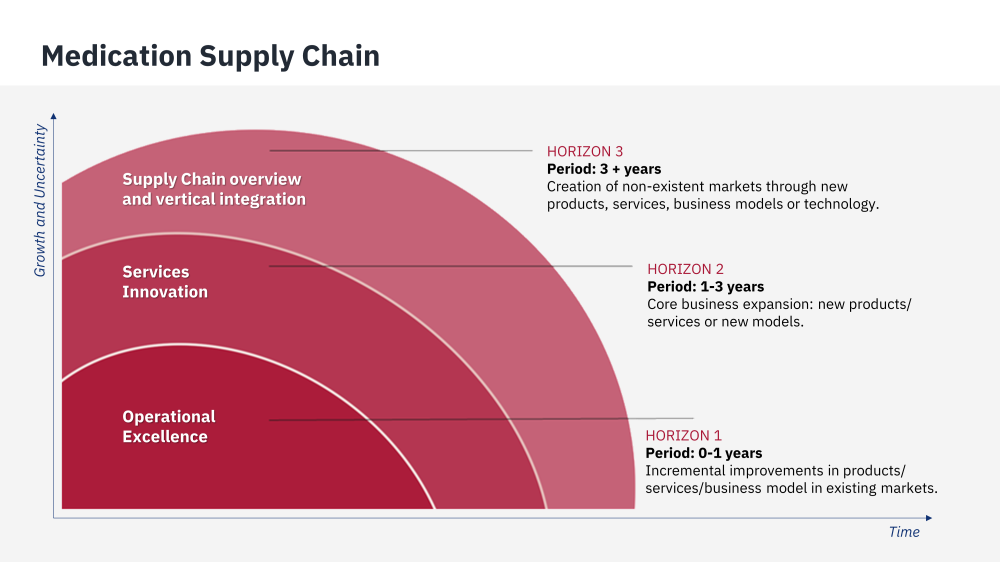
The result
Once the four strategic initiatives to invest in were presented, the Hoshin Matrix was built. This tool envisages the quantitative definition of the 3-5 years strategic vision, its deployment in annual goals, the identification of initiatives/processes to be improved and the corresponding metrics and owners.
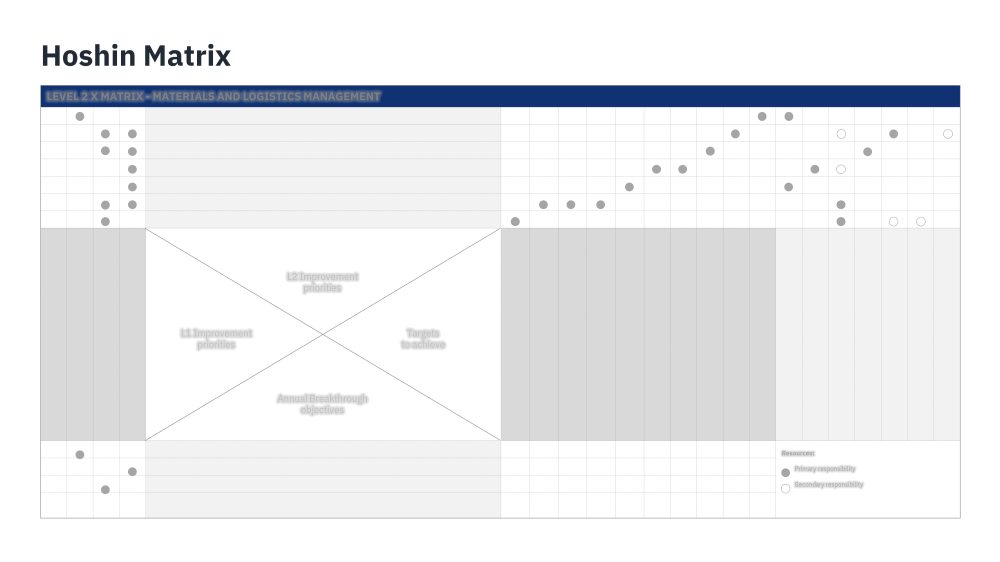
In addition to the results obtained from the implementation of this strategy, sales increased by 30%, together with a 22% increase in the gross margin, thanks to the implementation of new services and the expansion of current services. The focus on operational excellence in the supply chain will enable the company to reduce its global costs by 25%.
#innovation
See more on Innovation
Find out more about Innovation
